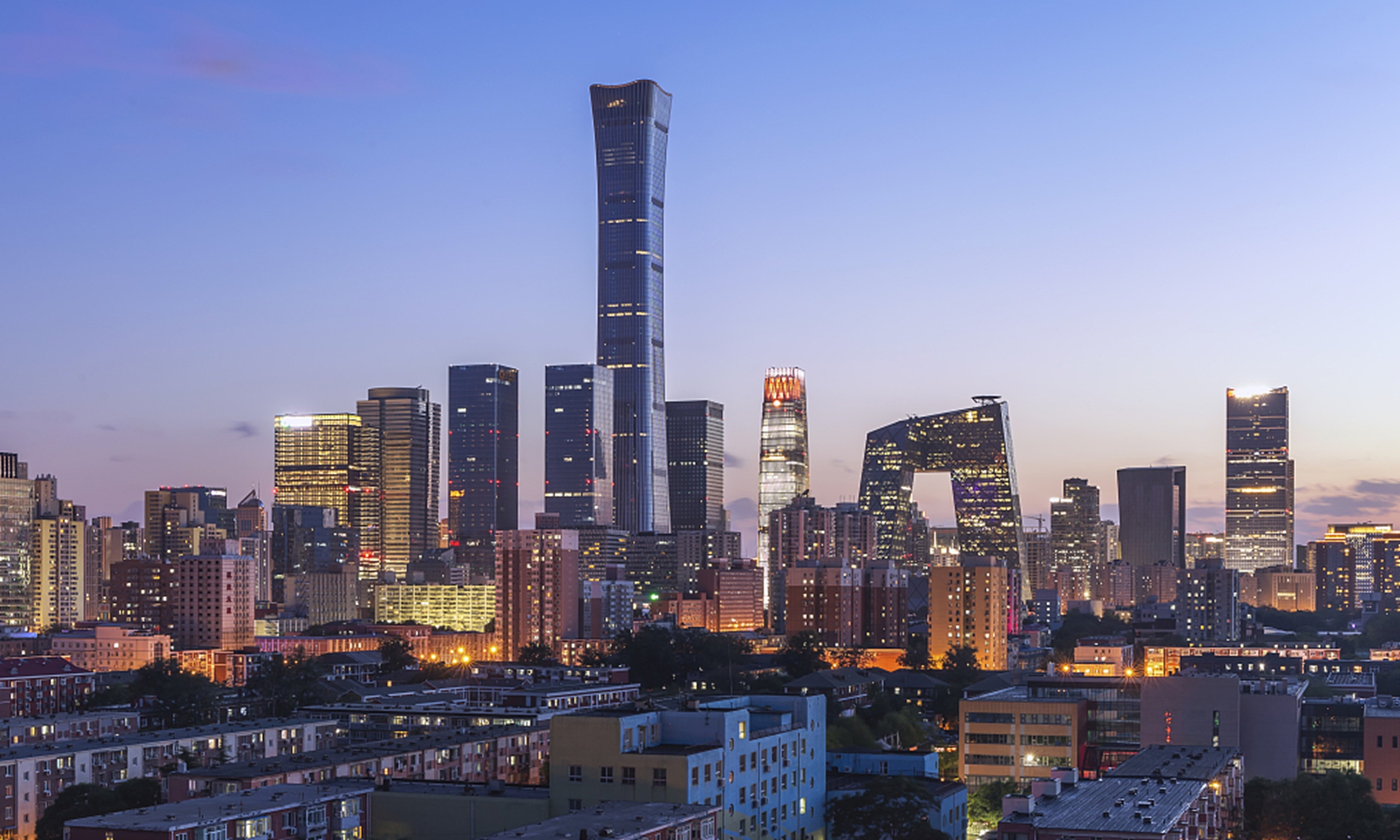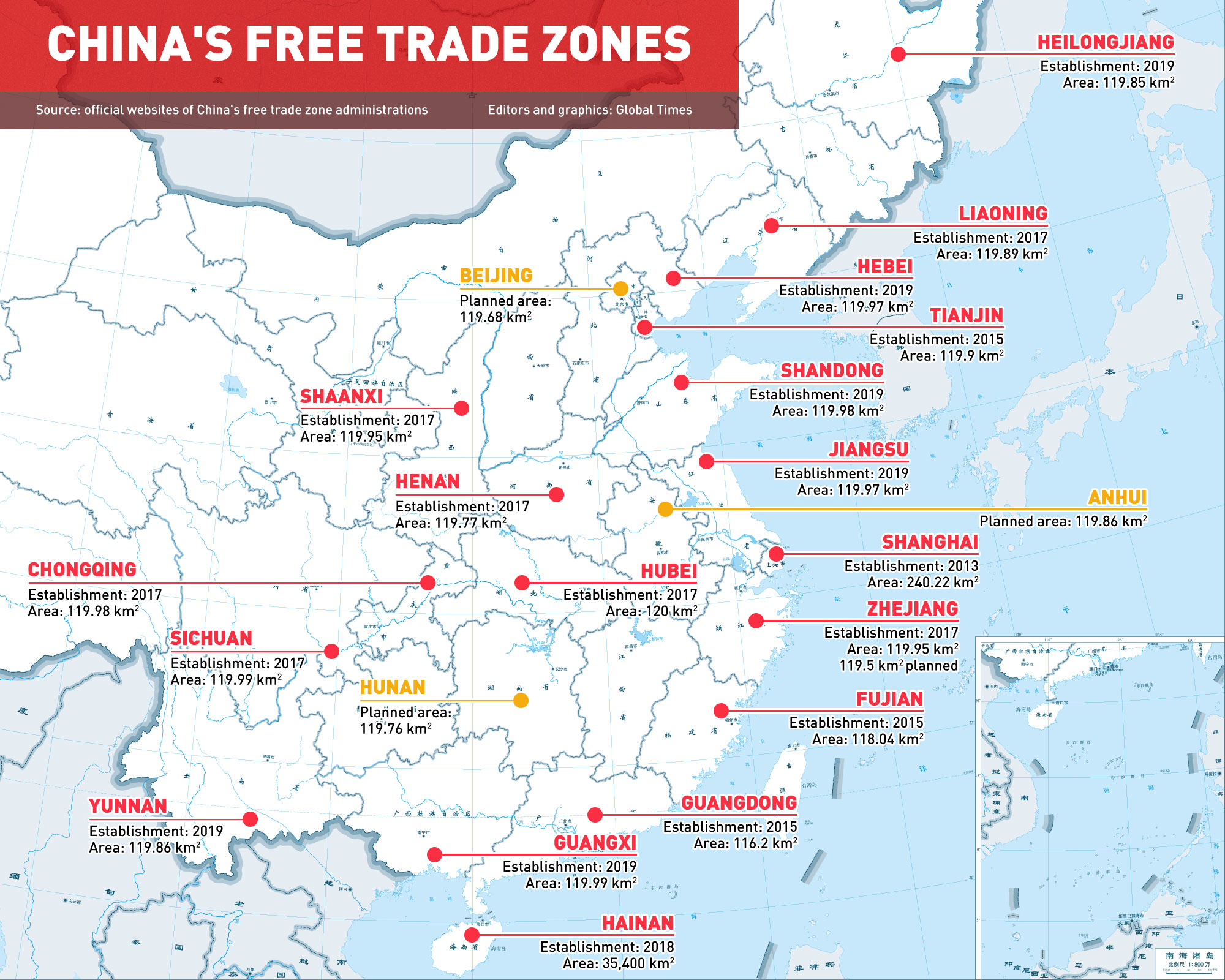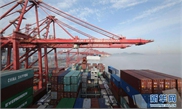
Photo: CFP
China's State Council on Monday announced plans to set up three new pilot free trade zones (FTZs) in Beijing, Central China's Hunan Province and East China's Anhui Province, and expand one of the 18 existing FTZs in East China's Zhejiang Province. The move is an effort by the world's second-largest economy to further open up amid a global downturn sparked by the coronavirus pandemic, rising protectionism and unilateralism.
China's 18 existing FTZs were established to attract foreign capital, boost regional development and improve trade. The nation is now allowing more provinces join this bold experiment.
"As protectionism and unilateralism rise amid the pandemic, China's efforts clearly show its responsibility as a major country. This can inject fresh momentum into the global economy as the world is experiencing a serious recession," said Zhao Ping, deputy head of the China Council for the Promotion of International Trade.
According to the plan, Beijing's FTZ aims to build the city into a globally influential technology and innovation center, in tandem with the accelerated development of the services and digital economy sectors.
Covering 119.68 square kilometers, the Beijing FTZ will focus on next-generation information technology, biology and technology services. The FTZ in Beijing is a new innovation in global FTZs. It's "the first to feature services trade and technology globally," said Tian Yun, vice director of the Beijing Economic Operation Association.

Infographic: GT
The other two new pilot FTZs in Anhui and Hunan have their own regional and industrial advantages.
The Hunan FTZ will focus on attracting overseas investment by loosening application requirements for foreign companies and promoting international cooperation, in particular with African countries and those along the routes of the Belt and Road Initiative.
Situated in the Yangtze River Delta economic zone, Anhui's FTZ, which contains a wealth of smart manufacturing enterprises, is set to boost the region's development and advanced manufacturing, integrated circuit, artificial intelligence and cross-border e-commerce industries, said the plan.
China's FTZ layout is divided into two parts: seaborne trade and land trade, Tian told the Global Times. "FTZs in coastal cities, including Shanghai, are developing their competitiveness based on world-class harbors," Tian said.
"With ports like Ningbo Zhoushan, the coastal FTZs will have the potential to compete with traditional free trade hubs such as Hong Kong and Singapore."
Inland regions, such as Chongqing and Anhui, will explore trade through the less-conventional means of railways, pivoting their markets toward Southeast Asia and Europe, according to Tian.
"Inland trade through railways is challenging the traditional route of international trade," Tian said.
"For example, with the establishment of the FTZ in Chengdu, the city aims to lure Japanese exporters to transship their goods en route to Europe, instead of going through the traditional route of Singapore via the Strait of Malacca."
FTZs in China have played significant roles in stabilizing the country's foreign trade and foreign investment amid the COVID-19 pandemic. In the first half, the total trade value in China's 18 FTZs surpassed 2.2 trillion yuan, accounting for 15.6 percent of the national total.
The actual use of foreign capital in FTZs reached 80.78 billion yuan, or 17.1 percent of the total.
Yang Kunyi contributed to the story


